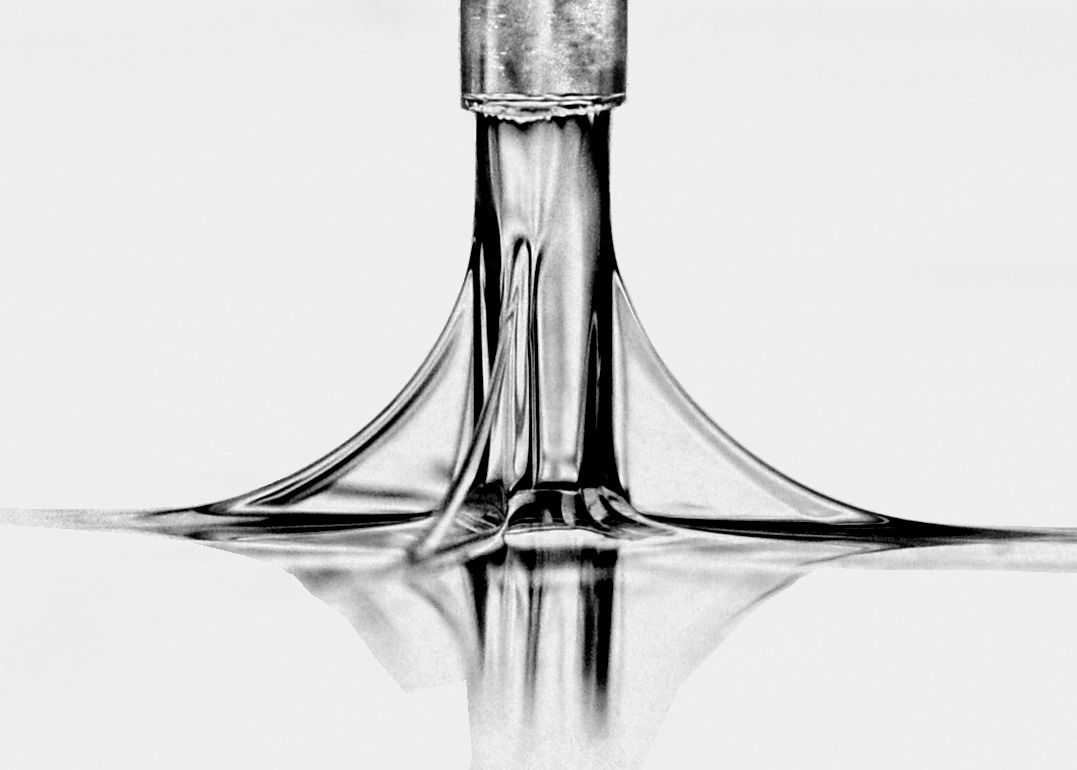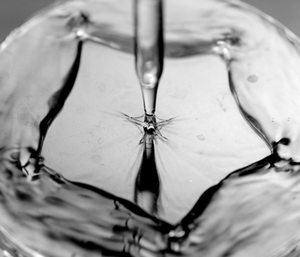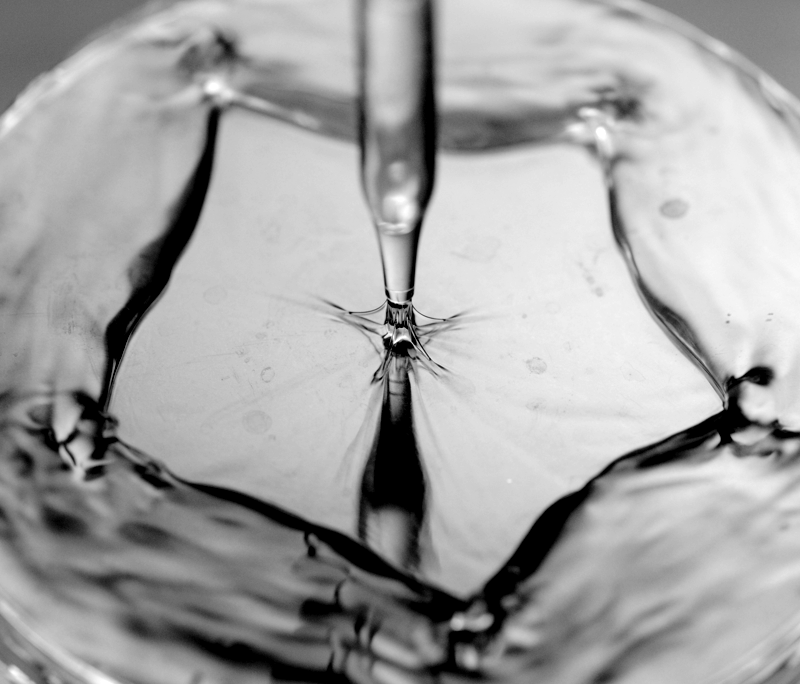Fluid Jet Acquires Wings
A jet of ordinary liquid striking a flat plate will spread out in a circular sheet, but researchers were surprised to discover that so-called viscoelastic liquids form square or triangular sheets, among other shapes. This strange behavior originates at the impact region, where the liquid reduces internal stress by forming arches or “wings.” These structures affect the outward fluid transport and may potentially be used to focus flow or optimize droplet formation in industrial situations.
Viscoelastic fluids, such as gels and pastes, respond to deformation in two ways—they yield to it and generate friction through viscosity, like honey; but they also “spring back” through elasticity, like a rubbery solid. The elasticity comes from long-chain molecules (polymers) that can stretch like tiny springs as a result of fluid flow. Saliva, tree sap, adhesives, paint, and even rocket propellant, are viscoelastic.
One of the unique properties of viscoelastic liquids is that they resist forming droplets (or atomizing), which makes them difficult to work with in fuel injection systems or in powder formation processes. Henri Lhuissier and his colleagues at the Paris Diderot University were studying atomization of viscoelastic liquids using a classic experiment in which a high-speed liquid jet is shot through a nozzle at a flat surface [1]. The deflected liquid expands outward in a thin sheet that, some distance from the impact point, either breaks up into droplets or suddenly slows down to form a “hydraulic jump”—the kind of stationary, wave-like structure that appears near rocks in a fast-moving stream.
Previous jet-sheet experiments have used ordinary liquids, so Lhuissier and his team were unsure what to expect. They started with solutions of polyethylene glycol, a well-studied viscoelastic liquid. They found that for jet velocities greater than about 1 meter per second and nozzle-to-surface distances less than a centimeter, the sheet morphed from a circular disk to a triangle, square, or other polygon, and droplets only emerged at the shape’s corners.
When the team zoomed in on the jet’s impact point, they saw “wings”—narrow structures flowing off of the sides of the jet to the surface, like the fins of a rocket—with the number of wings equal to the number of sheet edges. They found that only viscoelastic fluids produced wings and that faster jets and shorter nozzle-surface distances induced more wings. The team counted a maximum of 34 wings when the nozzle was only a fraction of a millimeter from the surface.
The researchers explain the behavior as a competition between elastic stress and surface tension. When the liquid exits the nozzle, the outer surface of the jet is moving slower than the interior. This flow mismatch, or shear strain, stretches the polymers near the outer surface, and they try to pull back to their original length, explains Lhuissier. “One way for them to shorten themselves is to take a shortcut along a wing,” he says. To understand this, imagine a long line of polymers connected into a kind of rubber band that must stretch along the jet and then make a 90-degree turn at the impact point. To reduce its elastic tension, the rubber band would prefer the shorter route along a wing. Of course, the polymers are not bound in single lines but loosely linked in a liquid network, with stress forces in many directions. Still, the principle is the same—the elastic stress in the fluid leads to the formation of wings.
However, surface tension opposes the added surface area created by each new wing. So the jet creates just enough wings to optimally balance the energy gain from elastic relaxation with the energy cost of creating additional surface area. The researchers incorporated both elastic stress and surface tension into a mathematical model that accurately predicted the number of wings for a given jet velocity and nozzle distance. The reason for the narrow shape of the wings is not yet completely understood, Lhuissier says.
“They offer convincing evidence that their scenario accounts (at least qualitatively) for all of the trends they have tested experimentally,” says Emmanuel Villermaux of the University of Provence in France. “The work is primarily of a heuristic nature, but consequences for droplet formation, flow focusing, and other applications will obviously follow,” Villermaux says.
This research is published in Physical Review Letters.
–Michael Schirber
Michael Schirber is a Corresponding Editor for Physics Magazine based in Lyon, France.
References
- F. Savart, Ann. De Chim. 54, 56 (1833)
More Information
Unusual behavior in viscoelastic and related fluids, from Gareth McKinley of MIT







